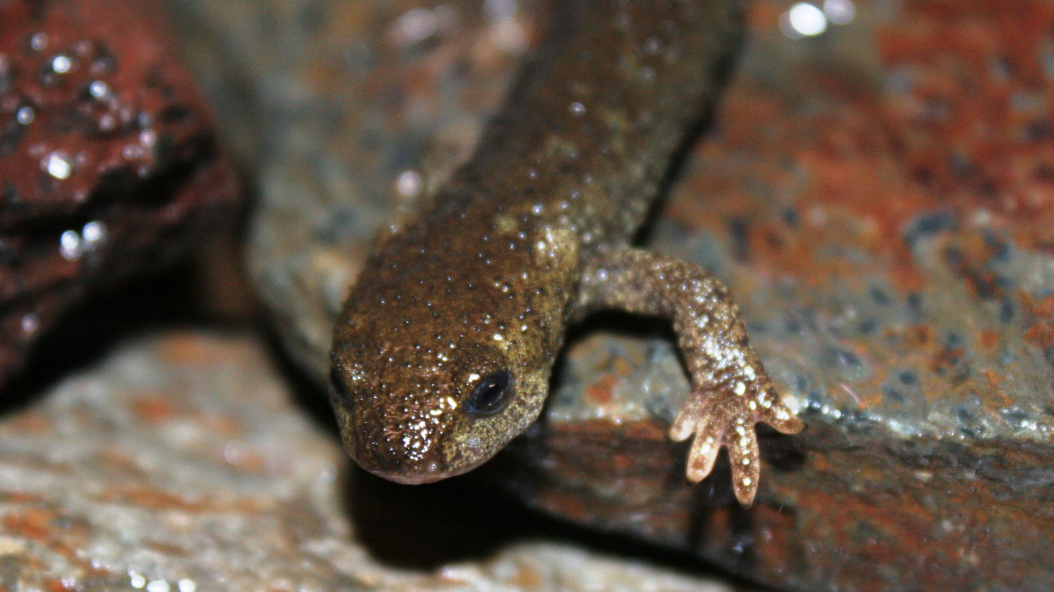Yesterday morning we opened a new space dedicated to the Montseny Brook Newt (calotriton arnoldi) - an amphibian that is in critical danger of extinction and which only lives in the Montseny mountain range and is Catalonia’s only endemic vertebrate. The new facility doubles the number of square metres that the newt can reproduce in. It also includes an educational classroom for raising awareness and delivering environmental education via computer games, videos, information panels, interactive material and direct observation of newt in aquaria. Together, these will provide information about the biology of this species and the efforts made to prevent it from becoming extinct.
Project LIFE - Montseny Brook Newt conservation
This has all been made possible thanks to the Montseny brook newt (calotriton arnoldi) conservation project - coordinated by Barcelona City Council together with Catalonia’s regional government, the Girona council, Forestal Catalana and Barcelona Zoo - being selected in 2016 as a LIFE Project for the European Union. The Montseny Brook Newt conservation programme has a total budget of €2,971,276 - 60% of which is provided by the LIFE project, which will promote activities aimed at improving the conservation status of this species up until 2020.
Some of these activities will involve reducing the identified threats to the newt, improving the status of the water in the Montseny Natural Park waterfalls, extending the area of distribution of the species by reintroducing specimens raised in captivity, ensuring genetic variation, and making special efforts to raising awareness about the importance of this species.
In critical danger of extinction
The first populations of this animal were discovered in 1979, and were attributed to the Pyrenean newt species. Later, in 2005, morphological studies concluded that it was a species in its own right: the Montseny brook newt. There were also two subspecies: the eastern and western.
In recent years, the population of Montseny newts has decreased by 15%, and has become the most threatened amphibian in Western Europe, and is on the UICN red list as a species in critical danger of extinction. The survival of this species is closely linked to the conservation of water resources as well as the surrounding forest areas.

Successful captive-breeding for reintroduction
Since it was discovered, a conservation programme for this new species has been run by Barcelona’s provincial council and Catalonia’s regional government. And, in 2007 a pilot reproduction programme was launched at the Torreferrussa Wildlife Recovery Centre. Barcelona Zoo joined in six years ago together with the Pont de Suert Wildlife Centre, with the aim of improving options for the species in the event of a future critical situation. For the same reason, Torreferrusa sent 24 specimens last year to Chester Zoo in England - one of the most prestigious places for amphibian recovery.
This year, since the start of the breeding season in May, 38 newt larvae have already been produced at the Zoo, adding to the 11 that were born last year; they are expected to continue being born until the end of September. That same month, the Torreferrussa and Pont de Suert centres also increased the capacity of their brook newt in-captivity breeding facilities.

The aim of the breeding program is to have enough specimens to be able to repopulate their habitat and build on the brook newt populations that have already been reintroduced in recent years. Very recent good news that confirms the success of the project is the discovery of the first larva born in nature from previously reintroduced specimens. This is hugely satisfying for all of us working to conserve the biodiversity of Montseny - a Biosphere Reserve for 40 years now.
The Montseny Brook Newt Life Space gives new impetus to the Zoo’s efforts to collaborate on conserving this small local amphibian, and is a good example of the integrated management (awareness raising, a threatened species and reintroduction back into the environment) that we aim to pursue through our new Strategic Plan.
You can follow the day-to-day progress of this project via our networks and on our Montseny Brook Newt Twitter account.



